The landscape of the self-defense and martial arts training world can be incredibly confusing. Trying to figure out which style of training, which physical location to train at, which community of people to become involved with, can all seem overwhelming and stressful. Everyone who becomes interested in learning self-defense wants to train at the “best” place.
It’s a decision that involves factoring in time and effort that will go into training, what sort of training will actually be taught and, really, what the student will get out of training. For some people it’s really about getting the most bang for their buck. For other’s it’s about getting a sense of accomplishment or reaching a personal goal. There’s also many people who just feel like they want to be doing “something” in the realm of learning self-defense because it’s a smart thing to do.
Take a look at apps like Citizen or Next Door every once in a while to get an understanding of the real dangers and types of incidents that are happening in your neighborhood.
Self-defense training should provide you with real skills that make you both safer and stronger. It should be a practice and a program that empowers you and really gives you a chance to prevail in situation where your life is on the line.
Krav Maga Worldwide self-defense training was developed for this exact purpose and Krav Maga Worldwide as a company is dedicated to making people safer and stronger. That’s different from the idea of teaching people skills so they can fight. It boils down to personal safety and the kind of training that will help provide it.

Krav Maga was created to teach people who had virtually no hand-to-hand combat experience to become skilled in hand-to-hand combat in a very short period of time. In order to do that Krav Maga’s creator, Imi Lichtenfeld, had to create a system and a systematic approach to teaching. A way in which people could learn self-defense skills quickly, and be able to recall and rely on them under stress.
The system that Krav Maga Worldwide certified training centers use to teach students to be effective with self-defense and improve their personal safety is applicable at all Krav Maga belt levels. This means that as students progress in their training, the method of learning and developing remains consistent.
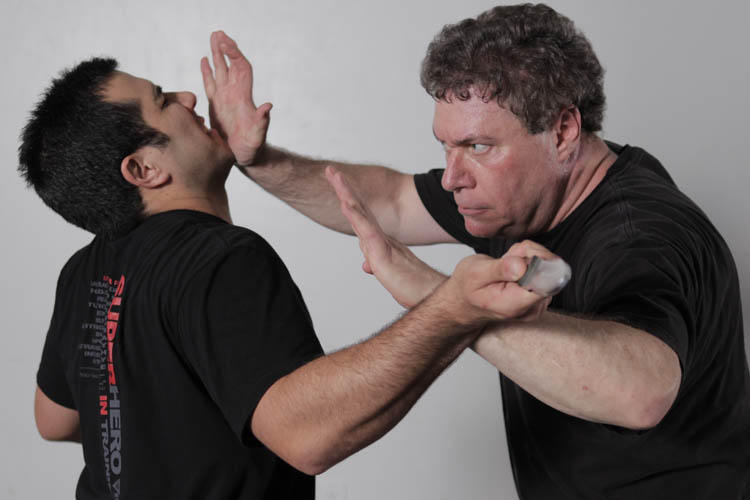
Higher level Krav Maga self-defense classes deal with complex scenarios and tactics. However the fundamentals and principles remain the same as what is learned in beginner levels of Krav Maga training. Realistically, you can’t be effective at defending yourself against someone who is pointing a gun at you unless you have solid fundamentals.
In terms of personal safety, it’s those solid fundamentals that everyone should know in order to really be able to protect themselves. Krav Maga self-defense classes stress those fundamentals. Our classes build those fundaments in students and push students to constantly refine them and keep them sharp. One of these self-defense fundamentals is understanding and utilizing what Krav Maga Worldwide self-defense training refers to as “the distance continuum.”
If you think of limbs as your “personal weapons”, the distance continuum is the idea of being able to understand which range from an opponent or attacker that each of your personal weapons will be effective in. Krav Maga is a no-holds barred system. We teach students that there are no rules in a fight for your life. When it comes to learning Krav Maga techniques for personal safety it’s about which range to strike from and how to use each of your personal weapons in that given range to make the most damage to someone who wants to damage you.
Long range combatives.
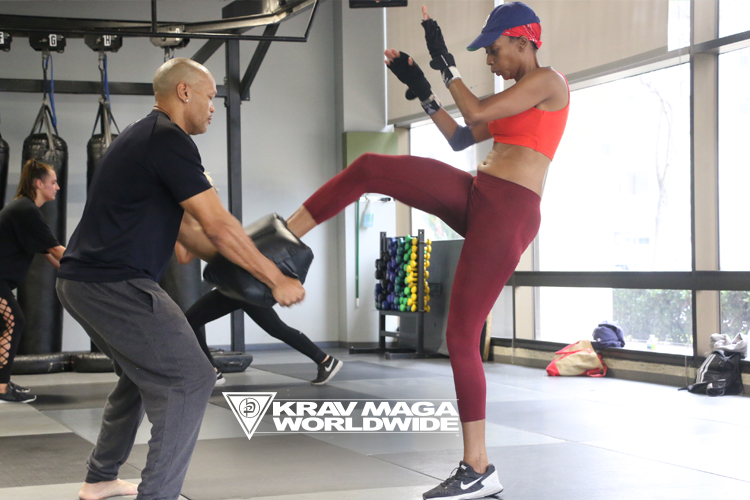
The length of your legs. It’s pretty simple. However that distance is, of course, different for each person. Regardless we consider long range combative to be used from a distance that is about the length of our legs, or just slightly outside.
Krav Maga Worldwide self-defense is really about staying safe. There’s a chance that if someone is outside the length of your legs, you might be able to get away from them and not HAVE to get into a fight. That chance is dictated by a number of factors that could be uncontrollable, though so we teach students to use their legs to throw long range strikes.
One Krav Maga technique that everyone should know is a front kick to the groin. Front kick to the groin is a rising kick that travels on a vertical plane, up and through the attacker or opponents groin.
The initial movement comes from driving the hips forward and leading with the knee of the kicking leg, then unfolding that leg up and through the attacker or opponent’s groin. The striking surface of the kick should be the top of the foot or the shin. In order to make sure the striking surface is correct, it’s important to point the toes of the kicking leg toward the target, not up toward the ceiling or sky.
Front kick to the groin is an essential Krav Maga technique to know because, aside from causing pain, it can cause an involuntary reaction that incapacitates the person who is kicked. That reaction could end the encounter entirely or give the defender a chance to escape.
Mid-range combatives.
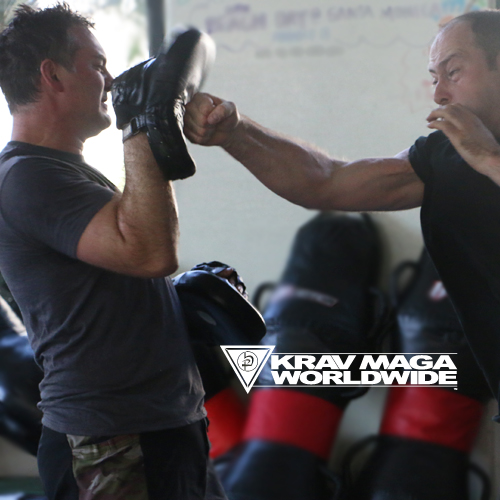
The length of your arms. Again, this is pretty simple to understand in terms of concept but there are variances depending on each person’s body.
The essential Krav Maga technique to know from mind-range is a straight punch.
Power in straight punches comes from the body turning, not just from the arms. To become proficient at throwing straight punches, try to imagine that your whole body is going to send the punch.
The rotation of the body is what throws the punch and generates power. The striking surface of the hand that is used for a straight punch should be the “top two” knuckles of the fist (pointer finger and middle finger). We generally think about the straight punch targeting areas of the face that are located “eyebrows and below” on the opponent or attacker.
Similar to the thinking behind kicking to the goin, punching to the “eyebrows and below” gives the defender a chance to damage the “soft targets” of an attacker’s face. The idea here again is to cause an involuntary reaction as well as pain. Disrupting an attacker’s ability to see or breathe gives the defender an advantage in the altercation and could provide an avenue for escape.
Close range combatives.
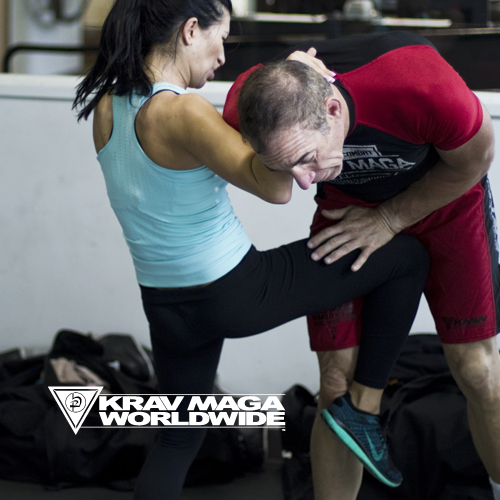
The distance that inside the length of your arms.
If an attacker is so close to you that they are inside your arms reach, you might still be able to kick them in the groin, but a straight punch is going to be less effective. Remember it’s your knuckles that deliver the straight punch so if the attacker is so close that they are past your knuckles, fists, wrists, etc. we teach students to think about using elbow strikes and knee strikes.
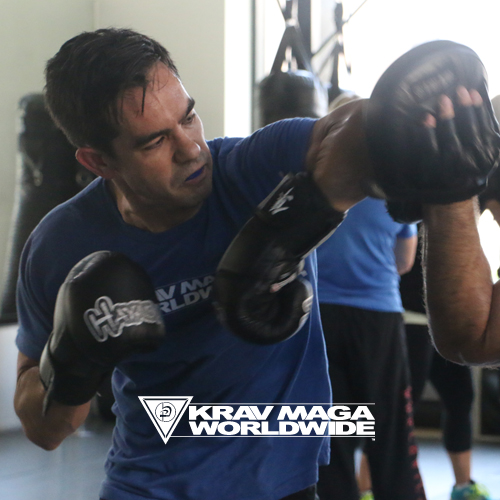
The Krav Maga worldwide self-defense system teaches 7 different elbow strikes. The technique varies based on the position relative to the attacker but the distance is the same. You can learn all about them here.
Knee strikes are delivered similar to the initial movement involved in sending a front kick to the groin. Driving the hips forward and bending the striking leg into an “arrowhead” shape so that the knee is leading. If we think about an attacker being in front of the defender, the knee strike should go forward as if going through the attacker. It shouldn’t go up as if the attacker was going to take their knee toward their chin.
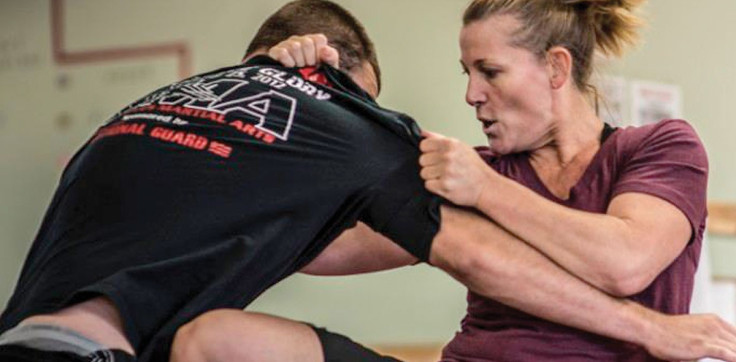
Depending on just how close the attacker is, there might be a need to grab or hold the attacker in a “control” position. Whether you are throwing a knee strike with a control or without, Krav Maga Worldwide self-defense classes teach students to target the attacker’s groin or midsection. The logic for this being the same with previous techniques. Try to cause an involuntary reaction in the attacker that will incapacitate them.
If the attacker folds or bends over after being hit with a knee strike, it might be possible to follow up with knees to the head. However initial strikes should target the groin or midsection.
Consistent training.
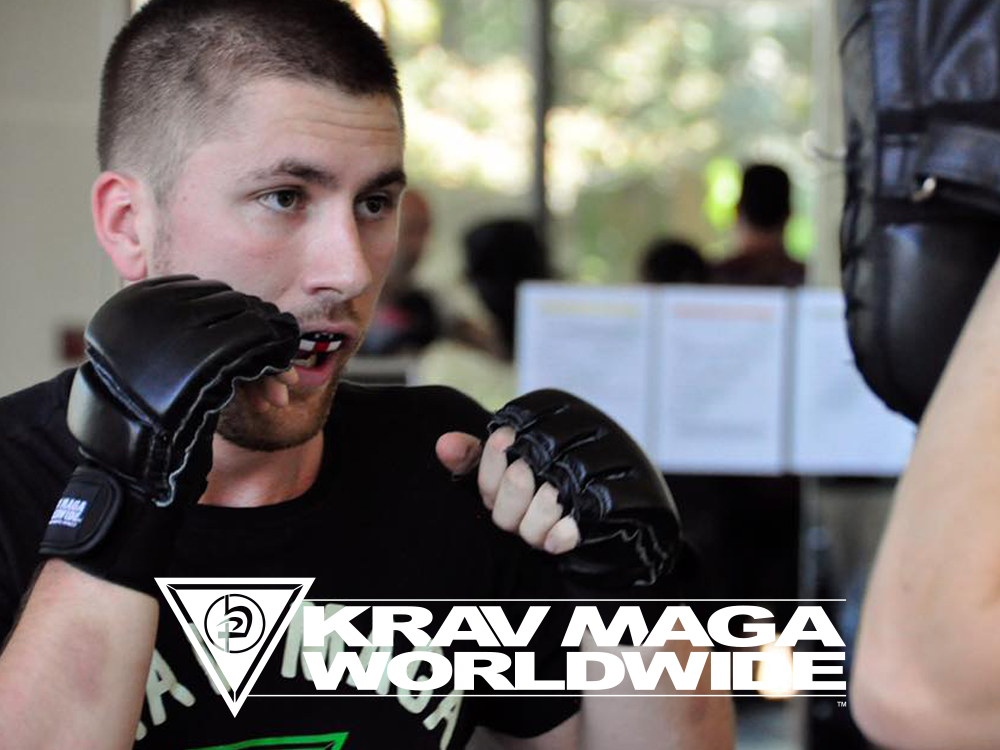
Understanding the distance continuum and knowing how to strike effectively from various distances is really the foundation for being able to effectively defend yourself.
Knowing how to do this and really having the ability to utilize the knowledge comes from consistent training and practicing in different scenarios and under different levels of stress.
So, if you’re thinking about self-defense training and all you see is a confusing landscape consider that Krav Maga Worldwide training is all about practical self-defense for personal safety. Our system is designed to make people safer and stronger. It’s not about learning how to fight for the purpose of fighting or for anything involving ego.
Krav Maga Illinois is a Krav Maga Worldwide certified training center, with certified instructors who dedicate their lives to empowering people with real skills to be safer and stronger. If you want to start self-defense training and are looking for an Official Krav Maga training center give us a call. Your first class is free! 773775-5201.
Krav Maga Illinois has been selected as Best Self Defense training by Chicago Magazine.
Founded in 2009 by Sue Garstki, a lifetime martial artist with over 40 years of martial arts and teaching experience. Krav Maga Illinois has served thousands of students looking for realistic self defense and awareness training, confidence, empowerment, physical fitness, and mental toughness. Our Krav Maga Training practitioners include moms, dads, students, professionals, military personnel, law enforcement, anyone interested in protecting and improving their quality of life. Krav Maga Illinois is a proud licensee of Krav Maga Worldwide, and is on a nationwide curriculum with over 150 KMW training facilities all over the world.
Krav Maga Illinois Krav Maga Kid’s Program is for children 10 and up. This is a program that focuses on reality self defense, anti-bullying, strength and confidence building. It is a hands on program in a safe and supportive environment.
All of our instructors are officially certified through Krav Maga Worldwide and USA Boxing. They are knowledgeable and recognized in their field of expertise. What we do is self defense, and that is clear through the information and level of instruction given by our talented instructors. Instructors can answer questions you may have by calling directly at 773/775-5201. You can also visit our website at KravMagaIllinois.com
About Sue Garstki: Sue Garstki is a certified Expert Level Kravmaga Worldwide Instructor, 2nd Degree Black Belt in Okinawan Shorei Goju Karate, and official USA Boxing Coach. She has been certified in Commando Krav Maga and the Haganah/F.I.G.H.T. system. She is also a Level 4 instructor in the Raven Method Close Quarter Defensive Tactics System, having had the honor of working with the Chicago Guardian Angels. Sue was nominated Female Reality Self Defense Instructor of the Year by the Global Network of Reality Based Self Defense Systems, and Civilian Close Quarter Combat Instructor of the Year. Sue has worked with the Chicago Police Department as well as schools and other organizations spreading awareness in Self Defense, Women’s Self Defense and Domestic Violence issues. In June 2013 Sue was inducted into the U.S.A. Martial Arts Hall of Fame, and again in 2015, where she was named Krav Maga Expert of the Year. In 2021 and 2022, she was again added to the USA Martial Arts Hall of Fame. She is a certified personal trainer under NDEITA and was one of the first instructors be be certified to teach the National Association of Professional Martial Artist’s (NAPMA) Kardio Karate program. She is the founder of the Women’s Martial Arts Alliance, member of the National Women’s Martial Arts Federation, and the American Women’s Self-Defense Association. Sue can be reached at any time for more information or to answer any questions by calling 773/775-5201.